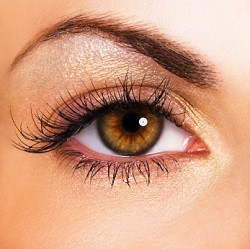Eyelid Surgery Can Lift Those Lids and Rejuvenate Your Look

Eyelid surgery, also known as blepharoplasty, is a method used to remove signs of aging around the eyes. As time goes on, the skin starts to droop with age. The eyelids tend to display signs of aging sooner than most areas of the body, since the skin is so thin in this area.
When the eyelids start drooping, they cause cosmetic problems, giving their owner an older, more haggard appearance. If the skin around the eyes sags too much, it can cause vision-related issues by affecting one’s peripheral vision.
Many patients choose to get excess fat, skin, and muscle removed to correct these issues. This procedure can make the eyes and entire face look younger. Sagging skin, drooping muscle, and bags under the eyes are addressed, as are fine wrinkles.
Am I a Good Candidate for Eyelid Surgery?
Eyelid surgery is recommended for anyone who is healthy and does not have a medical history that may create complications during the procedure. It is an excellent choice for non-smokers, since smoking can negatively affect the healing process and the health of the skin tissues. If you are a smoker, you will need to stop several weeks in advance and avoid smoking during the recovery process.
What Happens During Eyelid Surgery?
Blepharoplasty is usually an outpatient procedure, meaning the patient can go home on the same day as the operation. Anesthesia will first be administered, usually local anesthesia in the form of a numbing injection to the area around the eyes. This is paired with sedation.
For eyelid surgeries where the surgeon has to operate on both the upper and lower eyelids, surgeons begin with the upper eyelids. Dr. Compton makes a small incision in the natural crease of the upper eyelid, and through this incision, he is able to remove excess skin and tighten muscle tissue.
To address the lower eyelids, an incision is made either right below the lash line or inside the lid. Excess fat is removed or repositioned, and other types of tissue are removed as needed.
Once the procedure is complete, the incisions are closed with the help of surgical sutures and then dressed appropriately. Typically, these sutures are dissolvable, meaning no removal will be necessary and they will disappear on their own.
Recovery After the Surgery
Patients must arrange for a ride home with a friend or a family member, since they will not be able to drive for the rest of the day. A slight blurriness may appear after surgery, but that will disappear shortly.
As part of recovery, it will be necessary to keep the eyes moist, since dryness is common during this time. This will require using prescribed eye drops or artificial tears as recommended.
Within two weeks, the area will have healed and the patient will find that the area around their eyes has regained its youthful contours.
Find Out More
Dr. Andrew Compton, an experienced facial plastic and reconstructive surgeon, will be happy to tell you more about eyelid surgery during a consultation. Contact our office today and schedule your appointment.


